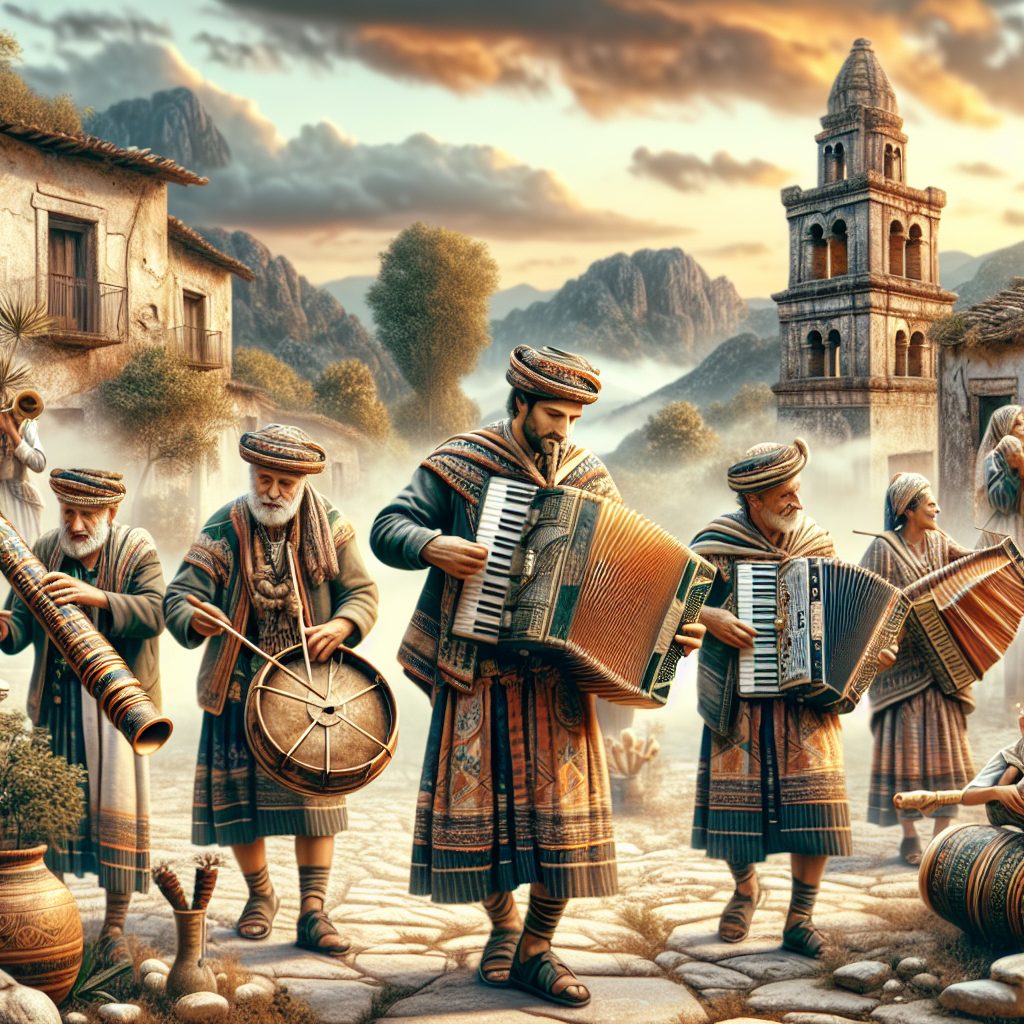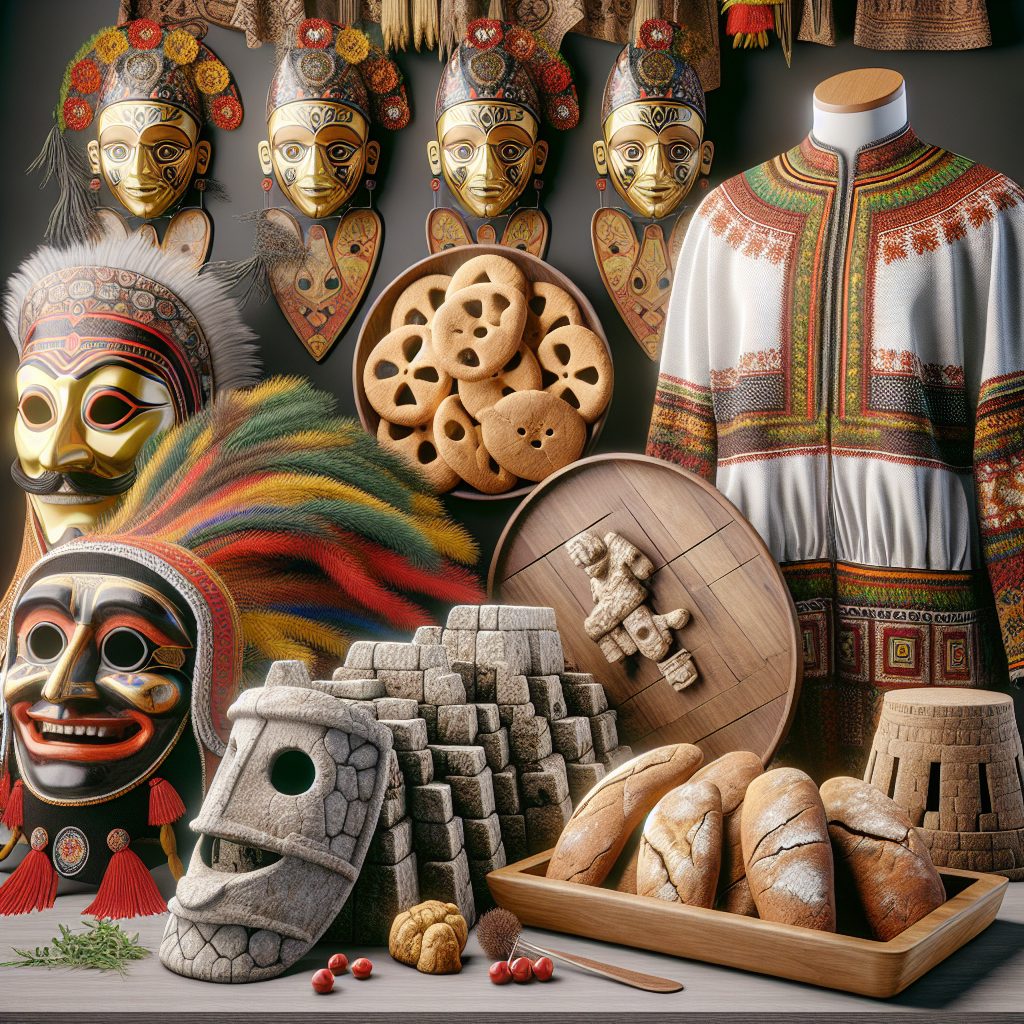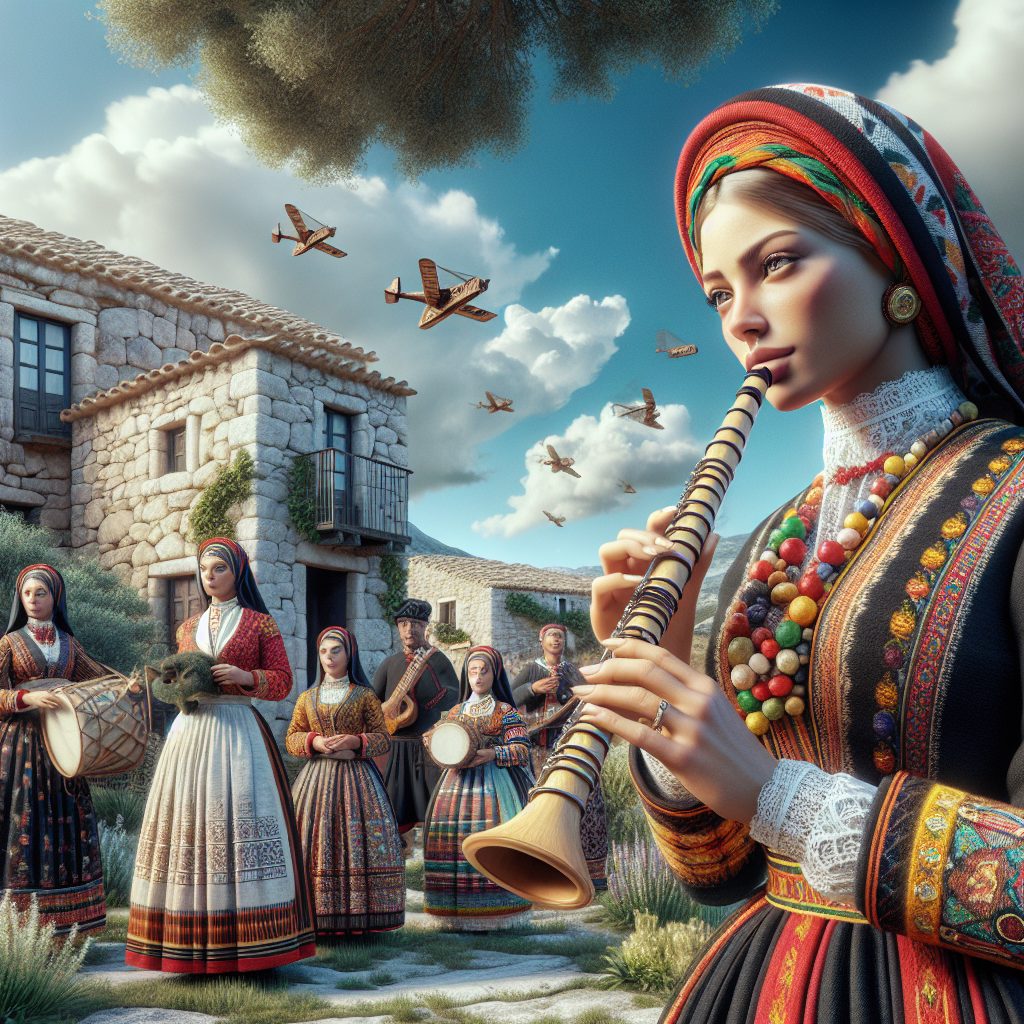Traditional music in Sardinia, an enchanting island located in the heart of the Mediterranean Sea, is a fascinating cultural heritage that has captivated people for centuries. With its roots deeply embedded in the island’s rich history and ancient traditions, Sardinian traditional music offers a unique insight into the authentic Sardinian lifestyle and plays a significant role in preserving its cultural identity.
One notable feature of traditional music in Sardinia is the extensive use of vocal techniques such as “cantu a tenore,” a mesmerizing form of polyphonic singing. This distinctive singing style involves four male voices blending together to create harmonies that evoke a sense of mysticism and transport listeners to another era. Additionally, one cannot ignore the evocative sounds of Sardinian instruments like the launeddas, a triple-pipe reed instrument that dates back over 2,000 years. The haunting melodies produced by the launeddas further enrich the traditional music scene in Sardinia, adding an element of raw emotion and cultural pride.
Moving forward, this article will delve deeper into the key aspects of traditional music in Sardinia. We will explore the historical importance of these musical traditions, their impact on Sardinian society, and the ways in which they have evolved over time. Furthermore, we will examine the significance of Sardinian traditional music in preserving the island’s cultural heritage and attracting tourists from around the world. So, let’s embark on a remarkable journey through the melodies and rhythms that have echoed through the mountains and valleys of Sardinia for centuries.
Key Takeaways
1. Sardinia is home to a thriving traditional music scene, deeply rooted in the island’s history and cultural heritage.
2. Traditional Sardinian music is characterized by unique vocal techniques, intricate polyphonic singing, and the use of traditional instruments like the launeddas and the guitarra battente.
3. The island hosts several music festivals throughout the year, showcasing both traditional and contemporary Sardinian music, attracting local and international audiences.
4. The preservation and promotion of traditional Sardinian music is largely attributed to the efforts of local cultural associations, musicians, and educational institutions.
5. Traditional Sardinian music plays a crucial role in maintaining the island’s cultural identity and serves as a powerful tool for communal bonding and expression of Sardinian pride.
HTML tags for headings:
Traditional Music in Sardinia
Overview of Traditional Music in Sardinia
Sardinia, the second-largest island in the Mediterranean, has a rich and diverse musical heritage. Traditional music holds a special place in Sardinian culture, reflecting its unique history and influences. From ancient chants to lively dances, the music of Sardinia showcases the island’s distinctive traditions.
Instruments Used in Sardinian Traditional Music
Sardinian traditional music is characterized by its distinct and traditional instruments. One notable instrument is the launeddas, a set of three reed pipes played simultaneously. Other instruments include the guitar-like chitarra sarda, the mandolin-like bosso, and the drum-like tamburinos.
Styles and Genres of Traditional Music
Sardinia boasts a variety of traditional music styles and genres. Filindeu is a form of religious chant that dates back to the ancient Nuragic civilization. Toneddas, a genre characterized by vocal improvisations, is often accompanied by instruments. Ballu tundu, on the other hand, is a popular dance style performed in a circular formation.
Importance of Traditional Music for Sardinian Culture
Traditional music plays a significant role in Sardinian culture, preserving ancient traditions and promoting a sense of identity. It serves as a means of passing down historical knowledge, storytelling, and celebrating important events and festivals. The music serves as a cultural thread that connects past and present generations.
Influence of Geography and History on Sardinian Traditional Music
Sardinia’s geographical isolation and historical events have shaped its unique traditional music. The island’s position in the Mediterranean has exposed it to various cultural influences, including those from North Africa, Spain, and Italy. These external influences, combined with ancient Nuragic roots, have contributed to the distinctiveness of Sardinian traditional music.
Contemporary Revival and Preservation Efforts
In recent years, there has been a revival of interest in Sardinian traditional music. Efforts have been made to preserve and promote this cultural heritage through festivals, concerts, and recordings. Local organizations and musicians continue to work towards raising awareness and appreciation for Sardinian traditional music.
Tips for Experiencing Traditional Music in Sardinia
1. Attend a traditional music festival: Sardinia hosts numerous festivals throughout the year dedicated to traditional music. This is an excellent opportunity to immerse yourself in the vibrant sounds and performances by local musicians.
2. Visit local communities: Explore the smaller towns and villages of Sardinia where traditional music is ingrained in daily life. Engage with locals, visit local haunts, and listen to impromptu performances to truly experience the essence of Sardinian traditional music.
3. Seek out traditional music venues: Look for venues such as cultural centers, taverns, or even private homes that regularly host traditional music events. These intimate settings provide a unique and authentic experience of Sardinian traditional music.
4. Learn about the history and cultural significance: Take the time to learn about the historical and cultural contexts in which Sardinian traditional music thrives. Understanding the background and meaning behind the music enhances the overall experience and appreciation.
5. Support local artists: Purchase albums or merchandise from local Sardinian musicians to support their work and contribute to the continuation of traditional music in the region. By directly supporting the artists, you contribute to the preservation and promotion of this valuable cultural heritage.
Frequently Asked Questions
1. What is traditional music in Sardinia?
Traditional music in Sardinia refers to the music that has been passed down through generations in the Sardinian culture. It encompasses various musical styles and instruments that are unique to the region.
2. What are the main instruments used in traditional Sardinian music?
The main instruments used in traditional Sardinian music include the launeddas, a triple pipe instrument; the chitarra sarda, a unique guitar-like instrument; and the cantu a tenore, a vocal style characterized by harmonized singing.
3. How important is traditional music in Sardinian culture?
Traditional music holds great significance in Sardinian culture as it plays a central role in festivals, religious ceremonies, and social gatherings. It serves as a means of preserving the island’s rich cultural heritage and fostering a sense of community.
4. Are there different styles of traditional music in Sardinia?
Yes, there are various styles of traditional music in Sardinia, each originating from different regions of the island. Some popular styles include canto a chitarra, canto a tenore, and ballo tondo.
5. Are there any modern adaptations of traditional Sardinian music?
Yes, traditional Sardinian music has undergone modern adaptations over time. Artists have fused traditional elements with contemporary styles, creating a unique blend of old and new. This approach allows the music to remain relevant and accessible to a wider audience.
6. Is there a specific occasion for listening to traditional Sardinian music?
While traditional Sardinian music is often performed during festivals and special events, it is also enjoyed by locals and visitors in everyday settings. Many Sardinians continue to appreciate and engage with traditional music as part of their daily lives.
7. Can tourists experience traditional Sardinian music?
Absolutely! Tourists visiting Sardinia have the opportunity to witness traditional music performances at festivals, concerts, and cultural events. Some local establishments also feature live traditional music to provide an immersive cultural experience.
8. How can one learn to play traditional Sardinian music?
Learning to play traditional Sardinian music can be done through various avenues. It is possible to find music schools and workshops in Sardinia that offer courses specifically focused on traditional music. Additionally, online resources and tutorial videos can assist aspiring musicians in their learning journey.
9. Can traditional Sardinian music be enjoyed by non-Sardinians?
Absolutely! Traditional Sardinian music has a universal appeal that transcends cultural boundaries. Its unique melodies, rhythms, and vocal harmonies can be appreciated by people from all walks of life, making it a delight for anyone with an interest in music and culture.
10. How does traditional Sardinian music contribute to cultural preservation?
Traditional Sardinian music provides a vital link to the island’s history and tradition. By keeping the music alive and passing it on to future generations, Sardinians ensure the preservation of their cultural heritage and identity in an ever-changing world.
Final Thoughts
Traditional music in Sardinia is not just a form of entertainment; it is a powerful tool that connects people to their roots and strengthens the bond within communities. The unique blend of ancient sounds and contemporary interpretations not only preserves Sardinia’s rich cultural heritage but also makes it accessible to a global audience.
As one delves into the enchanting world of traditional Sardinian music, it becomes evident that its influence goes beyond melody and rhythm. It serves as a testament to the resilience of a people, their pride in their heritage, and their commitment to keeping traditions alive. Whether enjoyed by locals or embraced by visitors, traditional Sardinian music continues to captivate hearts and minds, offering a profound glimpse into the soul of this extraordinary Mediterranean island.






